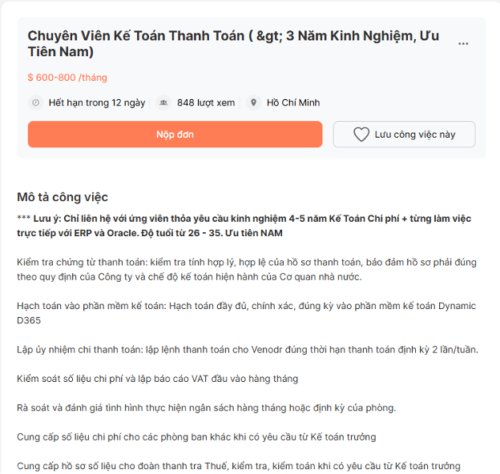Discrimination in general, and discrimination in employment and occupation in particular, poses a significant risk of perpetuating social inequality. Indeed, when prejudices manifest across various aspects of life, employers may inherently harbor biases against those around them, including employees and job applicants. Discrimination disrupts the balance in opportunities, benefits, work environments, and job performance, thereby negatively impacting societal development.
By joining new-generation free trade agreements (FTAs) such as the CPTPP and EVFTA, Vietnam has committed to adhering to international labor standards, including the principle of non-discrimination. However, to effectively implement these commitments, Vietnam must assess the compatibility between its domestic laws and the provisions of these FTAs.
1. Provisions on Employment and Occupational Discrimination in New-Generation FTAs
As of October 2024, Vietnam has engaged in 19 FTAs, including 17 that are in effect and 2 under negotiation. The provisions in new-generation FTAs go beyond trade issues, addressing non-trade matters such as labor, the environment, sustainable development, and green growth. Labor has garnered significant attention globally due to its connection with human rights and its role as a key factor in determining the cost of goods and services.
In participating in new-generation FTAs, all member states are treated equally and must comply with labor commitments, particularly those aimed at eliminating discrimination in employment and occupation.
- CPTPP requires member states to comply with the ILO’s core labor standards, including Convention No. 111 on discrimination in employment and occupation.
- Similarly, EVFTA emphasizes the protection of equality in labor through its chapters on trade and sustainable development.
These FTAs do not create any new obligations but merely reiterate the ILO labor standards.
2. Provisions on Employment and Occupational Discrimination in Vietnamese Law
Since joining new-generation FTAs, Vietnam has consistently made efforts to adjust its legal provisions to align with international standards, particularly those related to employment and occupational discrimination, in compliance with ILO principles.
The Labor Code 2019 explicitly recognizes the principle of non-discrimination as follows:
- Clause 8 Article 3 defines the concept of discrimination in labor “means discrimination on the grounds of race, skin color, nationality, ethnicity, gender, age, pregnancy, marital status, religion, opinion, disability, family responsibility, HIV infection, establishment of or participation in trade union or internal employee organization in a manner that affects the equality of opportunity of employment”.
In addition to the six grounds for discrimination in employment outlined in Convention No. 111, including race, color, ethnicity, national or social origin, gender, religion, and political opinion, Vietnamese law has expanded and clarified the concept of “other factors” under this Convention. These “other factors” include age, pregnancy status, marital status, disability, family responsibilities, HIV status, or reasons related to the formation, membership, and participation in trade unions or workers’ organizations within enterprises.
- Point a, Clause 1, Article 5 stipulates that employees have the right to work; the freedom to choose their employment, workplace, occupation, training, and career development; and to be free from discrimination in the workplace.
- Article 8 prohibits acts of discrimination based on gender, race, color, nationality, beliefs, religion, disability, age, and marital status.
- Articles 90 and 136 specifically provide for the right to equal treatment in recruitment, training, and working conditions.
- Chapter X provides specific provisions for female workers and ensures gender equality, not only aiming to protect vulnerable employees but also reflecting a commitment to gender equality and the elimination of all forms of gender discrimination in employment and occupation.
In this regard, Articles 139, 140, and 141 stipulate maternity benefits and the right to receive social insurance allowances for employees caring for sick children or taking maternity measures, ensuring that these benefits are the same regardless of the employee’s gender.
In addition, the Law on Gender Equality of 2006 and related legal documents serve as a legal foundation for protecting equality in labor.
3. The Compatibility Between Vietnamese Law and New-Generation FTAs on Employment and Occupational Discrimination
3.1 Similarities
Vietnamese law has established a fundamental legal framework that aligns with the commitments under new-generation FTAs, particularly emphasizing the principles of non-discrimination and the protection of equality in employment and occupation.
Furthermore, Vietnam’s ratification of the ILO’s core labor conventions, including Convention No. 111 on discrimination in employment and occupation, demonstrates its clear commitment to complying with international labor standards and integrating deeply into the global legal environment.
3.2 Legal Shortcomings
3.2.1 Lacking mechanisms to address acts of employment and occupational discrimination during the recruitment process
Clause 1, Article 136 of the Labor Code 2019 stipulates that employers are responsible for ensuring gender equality and implementing measures to promote gender equality in recruitment, job placement, training, working hours, rest periods, wages, and other benefits. However, in practice, many instances of discrimination still occur during the recruitment process. Job applicants may face discrimination based on gender, age, marital status, pregnancy status and plans, as well as other factors.
Job advertisements like the ones below are very common on job search websites in Vietnam.

Although the job description only includes basic accounting tasks such as data verification, entry into accounting software, and preparing payment orders, which are not physically demanding and do not specifically affect women, the advertisement still “prefers male candidates.” This is despite the fact that female employees are fully capable of performing these tasks.
In addition, discrimination based on marital status, pregnancy status, and plans is not directly stated in job advertisements but is often questioned during the interview process. Questions about marriage and pregnancy during recruitment represent a form of discrimination aimed at excluding female candidates or those who are unmarried. Employers may believe that married individuals will devote more time to their families, and that female employees are more likely to take time off for childbirth, childcare, and may not be willing to dedicate themselves to work, work overtime, or travel for business.
Currently, Vietnam does not have a mechanism to address cases of discrimination during recruitment. There are no specific regulations on the authorities responsible for receiving complaints from applicants, the methods for collecting information, or whether complaints can be submitted in written form, audio recordings, or video recordings. There is also no provision for simply acknowledging complaints from applicants. Even job advertisements containing discriminatory content are not investigated or addressed by any authority.
3.2.2 Discrimination also manifests in the retirement age of employees
The roadmap for adjusting the retirement age of employees, as stipulated in Clause 2, Article 4 of Decree No. 135/2020/ND-CP, gradually narrows the gap between men and women, aligning with global trends. However, it still reflects discrimination against both male and female employees.
According to statistics from the Central Population and Housing Census Steering Committee, the average life expectancy of women has always been higher than that of men. By 2019, the average life expectancy gap between women and men was 5.3 years10. Despite women having a higher average life expectancy, their retirement age is set lower, while the standard working age for both men and women is 18 years, as stipulated in Clause 4, Point a, Article 18 of Labor Code 2019.
This reflects discrimination against men, who must work longer to reach the retirement age, and it will not be until 2035—12 years from now—that this gap will be reduced to just 2 years, with men still having a higher retirement age. At the same time, this represents discrimination against women in terms of opportunities for advancement to leadership or higher positions, as they may be required to retire when reaching the retirement age. If women continue working past the retirement age, they are considered senior employees and subject to different regulations than regular employees.
3.2.3 Differences in Perception of Discrimination
The position of employers is higher than that of employees or job applicants; employers often believe they have the right to impose demands and compel employees or applicants to accept them to continue working and earn a living. Moreover, since no employer has been penalized or sanctioned for discriminatory practices in employment and occupation, employers remain complacent about their position. Although the law still prohibits such practices and stipulates penalties, there have been no specific cases of enforcement to serve as a deterrent or an example for employers.
The lack of awareness and skills among employees and job applicants also contributes to employment and occupational discrimination. In practice, employees and job applicants are often individuals in need of work to earn a living; they are unlikely to speak out about violations and instead tend to silently endure the discrimination they experience.
4. Some Proposals for Improving the Legal Framework
First, there should be regulations on the mechanism for receiving information and handling violations related to employment and occupational discrimination during the recruitment process. Specifically:
- Strictly prohibit discrimination in any form, whether direct or indirect, through actions such as posting discriminatory job advertisements, collecting information during the recruitment process or interviews, holding biased views, exploiting conditions or relationships, imposing conditions, making demands, accepting money, or seeking any other benefits in the recruitment of employees.
- All acts of discrimination in recruitment should be strictly penalized, with penalties including administrative fines, suspension of production or business activities, correction of violations, and remedying of the consequences. It is recommended to take strict action against one or more exemplary cases to deter other employers from similar behavior.
- Establish a mechanism for receiving and addressing issues related to discrimination in recruitment to protect job applicants. This could be through a nationwide hotline, with responsibility delegated to specialized local agencies to investigate, handle, and report the outcomes back to the receiving unit for updates.
Second, balance the retirement age for male and female employees.
Third, assign local specialized agencies (such as the Department of Labor, Invalids, and Social Affairs at the district or municipal level) to raise awareness and disseminate knowledge about employment discrimination in general and specifically in the recruitment process to employers, employees, and job applicants. At the same time, these agencies should provide updated information on legal regulations regarding penalties and administrative actions against employers, as well as mechanisms for addressing grievances, ensuring that employees and job applicants are informed of their rights when violations of non-discrimination principles occur.
Discrimination in employment and occupation is not only a legal issue but also a measure of sustainable social development. Vietnam’s commitment to adhering to international standards through new-generation FTAs presents an opportunity to improve the legal framework and labor practices. However, to achieve this, close collaboration between the state, employers, and employees is essential.
See more:
1/ Obligations of employers to organize labor safety and hygiene training
2/ Information confidentiality issues in labor relations
Disclaimers:
This article is for general information purposes only and is not intended to provide any legal advice for any particular case. The legal provisions referenced in the content are in effect at the time of publication but may have expired at the time you read the content. We therefore advise that you always consult a professional consultant before applying any content.
For issues related to the content or intellectual property rights of the article, please email cs@apolatlegal.vn.
Apolat Legal is a law firm in Vietnam with experience and capacity to provide consulting services related to Employment and contact our team of lawyers in Vietnam via email info@apolatlegal.com.





































